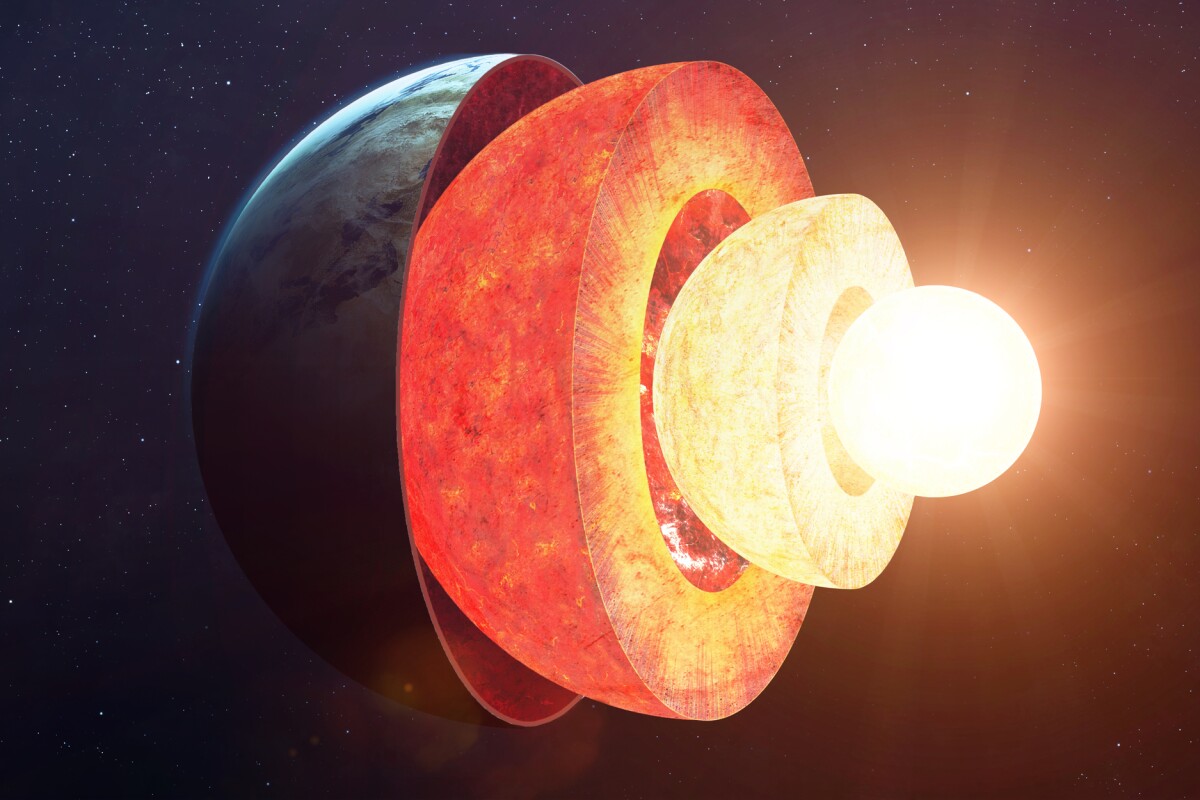
We also do have a cultural claim for a hollow earth with a fair bit of observational data shared about. This unthinkable theory has been about for over two hundred years even.
Here is the problem. Seismic work is best explained as contained by a crustal wave guide. The crust looks to be around two hundred miles thick and we have no evidence of anything inside that except a central core of some sort. such a rotating core can be expected to flip over regularly in order to balance forces out.
We have reports of such an object acting as a sun and radiating heavily in the blue from hollow earth reports.
So we now have confirmation that our core is acting just like such a free floating object.
first we have the void and then the act of creation in which the SPACE TIME pendulum is created.
What it means DUMBASSES is that the Earth is hollow and we have a solar object in the center. I can get you there, wheras Newton cannot. We clearly need a new form of matter to be named unthinkium..
Earth's inner core may have stopped spinning – but what does that mean?
January 24, 2023
An artist's impression of the inner structure of the Earth??
https://newatlas.com/science/earth-inner-core-stopped-spinning/
The inner Earth is a mysterious place, and now scientists may have uncovered a strange new secret. According to a new study, the Earth’s inner core may have recently stopped rotating, relative to the surface, as part of a decades-long cycle.
With thousands of miles of rock in the way, it’s hard to get a good look at exactly what’s going on in the center of the Earth. Scientists have to study it indirectly by measuring magnetic field changes, ancient crystals, or how seismic waves from earthquakes propagate through different layers. This has helped geologists learn new details, including that the core could be made of a superionic iron alloy.
Now a new study has reached a surprising conclusion – that relative to Earth’s surface, the inner core stopped spinning around 2009. This could be possible because the inner core is a more or less solid ball of iron floating in a liquid outer core, so its rotation is not necessarily tied to that of the rest of the planet.
The researchers, from Peking University, analyzed the seismic waves from earthquakes passing through the inner core since the 1960s, investigating the differences in how those waves looked and how long it took them to propagate. Intriguingly, they found that for decades the travel times of these waves would vary in specific ways – but after about 2009, that variation all but vanished. Travel times have remained steady, which the team says is an indication that the core’s rotation has “paused.”
That doesn’t mean that it’s not spinning at all – it means that the core’s rotation is now essentially in lockstep with the rotation at the surface. At different times the core can race around or lag behind the surface, but even then the difference is tiny. It can, however, add up over time, so that the core is drifting by dozens of kilometers per year.
The team goes a step further and says that the study could indicate that the core may now be rotating in the opposite direction. But again, that doesn't quite mean what it sounds like – instead, the core’s slowing rotation makes it appear to be drifting backwards relative to the surface.
This is all part of a 70-year cycle, according to the researchers. They claim to have found evidence that the previous reversal took place in the early 1970s, and it may even coincide with other observed changes in Earth cycles, such as the magnetic field and the length of the day.
The cause of this cycle could be several major competing forces. The magnetic field generated by the outer core could be speeding up the inner core’s spin, while the huge gravitational influence of the mantle could drag on it and slow its spin.
Of course, in the murky world of inner Earth geology, nothing is set in stone (pun intended), and other scientists disagree with the findings of the new study.
“These mathematical models are most likely all incorrect because they explain the observed data but are not required by the data,” Hrvoje Tkalcic, a geophysicist at the Australian National University, told AFP. “Therefore, the geophysical community will be divided about this finding and the topic will remain controversial.”
No comments:
Post a Comment